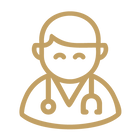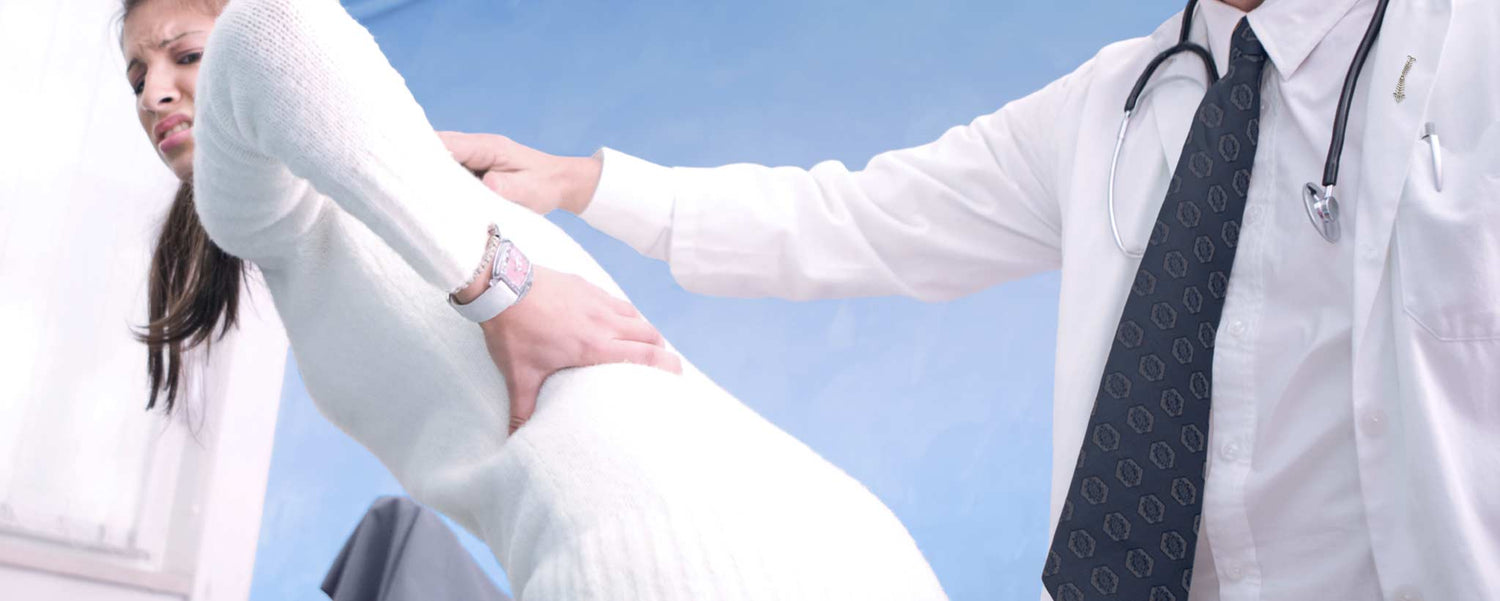When it hurts to sit, particularly on hard surfaces, sufferers may rotate their hips to shift weight onto their hip and relieve pressure. This can result in vertebral misalignment.
« Login For Audio »
Sore Tailbone

The medical condition coccydynia has several names: coccalgia, coccygalgia, coccygial, and coccygodynia are a few. The most obvious symptom is piercing pain in the coccyx (tailbone)—the very end of backache.
The pain becomes severe when sitting for a long period, during sex, and changing from sitting to standing up. The challenge for an osteopath is to distinguish whether radiculopathy (referred nerve pain) or muscle spasms are primary or secondary symptoms.
Coccydynia Diagnosis
Thorough medical history and physical examination by an expert are sufficient for the coccydynia diagnosis. A doctor can ask about the level of pain, injuries, childbirth experience, and exercise routine.
A physical exam includes localized palpation to identify tenderness, swelling, tumors, or cysts in the coccyx region. This may be followed by an intrarectal examination. The physician may slightly manipulate the coccyx through the rectum to determine whether it is stationary or mobile.
Diagnostic tests include X-rays, coccygeal discograms, and less often, CT or MRI scans. It is important to visualize the weight-bearing coccyx when leaning forward and backward in addition to standing so facilities with dynamic MRI are diagnostically helpful.
Most common causes of coccyx pain include trauma, childbirth, repetitive strain injury, fractures, dislocations, and primary or metastatic malignancies. It is important to distinguish between a bruised tailbone and a fracture. A bruised tailbone can take up to four weeks to heal, while a healing time for a fracture can be up to 12 weeks. Coccydynia can last much longer.
Rare causes may be nerve damage, cysts such as Tarlov (sacral nerve) cysts, obesity, and a bursitis-like condition that can arise in patients with minimal gluteal fat padding. Obesity is three times more common in coccydynia patients than in the typical population.
Obesity is three times more common in coccydynia patients than in the typical population.
There are four different orientations for the coccyx, as described by Postacchini and Massobrio:
| Type | Coccyx Position | |
|---|---|---|
| Type I | Curved anteriorly with its apex facing downward and caudally | |
| Type II | More dramatic forward curvature with forward facing apex | |
| Type III | Angles forward sharply (hooked coccyx) | |
| Type IV | Subluxated at the sacrococcygeal joint | |
Coccydynia Treatments
Multiple anterior and posterior sacrococcygeal ligaments attach the sacrum to the coccyx. Depending on position, it can also bear one-third of your weight when sitting, sharing weight with bilateral ischium.
After coccyx pain becomes chronic (+ 3–6 months), it is less likely to resolve by natural recovery alone. Chronic pain is more likely to continue indefinitely and may be resistant to conservative treatment.
In most cases, pain is treated with pain relievers, physical therapy, special padded seating, and/or behavioral modification. Modified exercise routines might include a change from biking to swimming or walking.
Depending on pain severity, a coccygectomy (coccyx removal) may be performed for chronic coccydynia (malformation, coccyx dislocation, unstable coccyx, coccyx spur, or hooked coccyx).
Because of the number of anatomical structures supported by the coccyx, its removal in whole or part is considered a last-resort treatment.
There is a favorable success rate among ideal candidates when surgery is performed by an experienced coccydynia surgeon. Visit the Orthopedics category for anatomical studies of the lower back.
To support the writing of useful articles about orthopedics, ClinicalPosters sells human anatomy charts, scientific posters, and other products online. You may sponsor specific articles, become a ClinicalNovellas Member, or remit a small donation.
ClinicalPosters sells human anatomy charts, scientific posters, and other products online to offset expense of the writing useful articles about orthopedics. Slide extra posters into DeuPair Frames without removing from the wall.
Show your support by donating, shopping for ClinicalPins, becoming a ClinicalNovellas Member, or leaving an encouraging comment to keep the research going.
To support the writing of useful articles about orthopedics, ClinicalPosters sells human anatomy charts, scientific posters, and other products online. You may sponsor specific articles or remit a small donation.
ClinicalPosters sells human anatomy charts, scientific posters, and other products online to offset expense of the writing useful articles about orthopedics. Slide extra posters into DeuPair Frames without removing from the wall.
ClinicalPosters sells human anatomy charts, scientific posters, and other products online. You may remit a small donation or become a ClinicalNovellas Member.
You can support the writing of useful articles about orthopedics by sponsoring specific articles, becoming a ClinicalNovellas Member, or remitting a small donation. Visible content is optimized for device size.








 Romance & Health Intertwine. Fall in love with a captivating romance miniseries that explores the essence of well-being. Become a ClinicalNovellas member for heartwarming tales.
Romance & Health Intertwine. Fall in love with a captivating romance miniseries that explores the essence of well-being. Become a ClinicalNovellas member for heartwarming tales.





